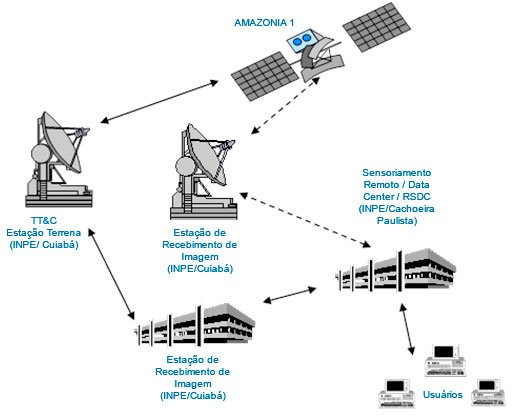

The Amazon Mission will provide remote sensing data (images) to observe and monitor deforestation, especially in the Amazon region, as well as the diversified agriculture throughout the country with a high revisit rate, working in synergy with existing environmental programs.
Its data will be useful to other related applications, such as: monitoring of the coastal region, water reservoirs, natural and cultivated forests, environmental disasters, among others.
The data will be available to both the scientific community and government agencies and to users interested in a better understanding of the terrestrial environment.
The Mission was planned to have three remote sensing satellites: Amazonia 1, Amazonia 1B and Amazonia-2, the first being in the final stages of development.
In addition to the final objectives associated with providing data for monitoring the environment, the mission has an important technological objective: the validation of the PMM Multi Mission Platform as a system, which will be used for the first time in the Amazonia 1 satellite.
Finally, the Amazonia Mission will consolidate Brazil's knowledge in the completely development of a space mission using 3 axes stabilized satellite, since the previous remote sensing satellites were developed in international cooperation with other countries.
This overall competence in systems engineering and project management leads the country to a new scientific and technological level for space missions. From the launch of the Amazonia 1 satellite and the in-flight validation of the PMM, Brazil will have dominated the manufacturing life cycle of space systems for satellites stabilized in three axes.
This means autonomy to perform missions of this category and the ability to go further to other types of missions. It also means the possibility of working at all stages and in all subsystems of a mission within national partnerships.
In addition, the availability of in-flight validation of the platform (PMM) will allow it to be re-used in other national or international missions.
Finally, the Brazilian space industry will also gain flight heritage in the equipment manufactured for the satellite, which opens perspectives for supply to other countries and space agencies.

